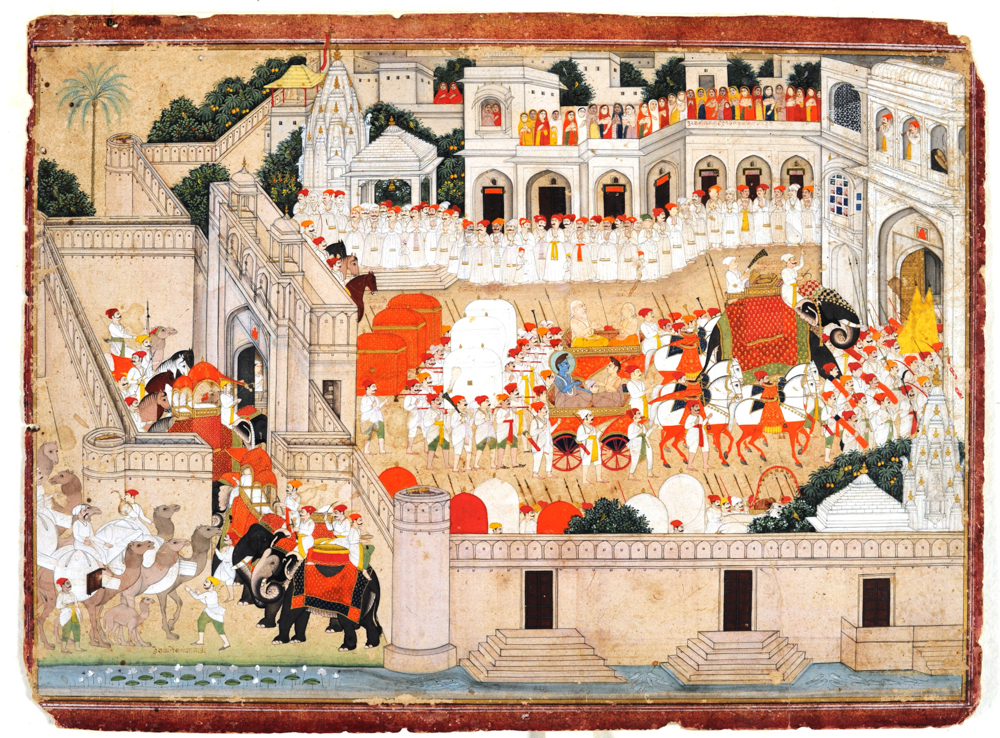On Sunday went to the Musee Cinquantenaire to see ‘Ramayana, Indian Miniature Art from the National Museum, New Delhi.'
What I find particularly interesting is the framing of interior and exterior spaces within the conventions of the frame on the page, which is very evident with scenes set in architectural spaces. Palaces and courtyards with terraces, loggias, windows and doors all serve this purpose in extraordinarily imaginative and creative ways.
There were 101 small paintings illustrating the entire story in various styles from between the sixteenth and nineteenth centuries framed and 'boxed' in an arrangement that followed a clockwise sequence around the temporary walls of the small room usually used for the collection of works from India but adapted and specially lit for this exhibition.
Hali Magazine's December the 5th edition 2013 explains the Ramayana as:
'One of the classic Hindu epics of India- a story of courage, loyalty, friendship and justice with deep religious significance which has been a great source of inspiration for artists throughout the centuries. Originally written in Sanskrit by the poet Valmiki more than two thousand years ago, the Ramayana tells of the many adventures and ordeals endured by the Rama during his fourteen years of exile. Banished to the forest, a long and laborious search for his beloved wife Sita who has been abducted by the cunning ten-headed demon king Ravana ensues, with help from his half-brother Lakshmana and an army of monkeys led by the monkey general Hanuman. Many Indians see the hero Rama as a deity and still venerate him as one of the ten reincarnations of the god Vishnu'
In December in the National Museum in Delhi I saw many beautiful tiny paintings with the same jewel like rich colour and tonal resonance and intense observation of natural forms in trees, rocks, birds, animals, flowers and plants, a quality of line and pattern pulsating with life and movement and full of human drama and storytelling. All these qualities can be seen in the painting below of squirrels in a plane tree with its soft rounded purple grey rocks and pale dusty brown squirrels, sandy coloured sky and golden autumn leaves.  |
| Squirrels in a Plane Tree attempting to gain hold of the tree. Attributed to Abu’l Hasan, 1605-08 Johnson Album |
The painting below from the exhibition has what appears to be two small Hindu temples inside the larger mogul style palace complex. The 'herringbone' perspective and isometric projections of walls, windows and doors serve to frame the processional movement of repeated motifs in a pattern white, red, yellow and black elements both into and through the space in a curving S shape.
 |
| Bharata returning to Ayodhya with Rama’s padukas (sandals) Based on the story of Adhyatma Ramayana Jaipur-Datia mixed style, Rajasthan, mid 18th century Artist: Guman Paper 30.5 x 41 cm |
No comments:
Post a Comment